Lisbon is the capital of Portugal and as a big city has a very good and affordable public transport system. By metro, bus, funicular, ferry, you can reach any part of the city without the need to rent a car or take a taxi. The old town is very compact and can be explored on foot, however, at some point, any traveler will need to use the Lisbon public transport system.
Lisbon Public Transport System – all you need to know!
How to get from Lisbon airport to the city?
If you’ve chosen Lisbon for your holidays, you will most probably have to catch a flight!
Lisbon Airport is also known as Lisbon Portela Airport and it’s one of the largest airports in Southern Europe and it continues to expand. There are many European and international flights to Portugal such as Birmingham, all London airports, Barcelona, Madrid, Malaga, Toulouse, Paris, Boston, and many others.
In addition, Lisbon Airport is located in about 7 km from the city center and there are three ways to get there – by metro, by bus or by Taxi.
The best of all is the metro. It’s cheap, safe, fairly fast mean of transport and it covers all the main points of the city. Metro trains have a frequency of 5-15 min and visitors will have to catch the only line from the airport – the red line. A single ticket costs €1.50. If you want to go to the historic center where perhaps is your vacation rental, you will need to change to the green or blue line. However, the metro is very well organized, signed and problem-free. Also, the ticket covers the entire journey from the airport to your holiday home!
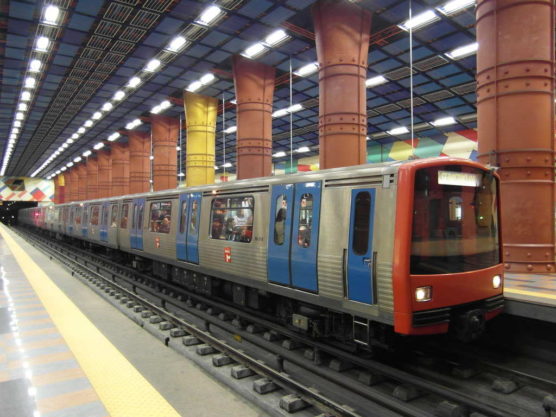
The second option is the Aerobus. It provides direct transport from the airport to the city and the tickets cost €4 for adult, €2 for children and €6 round trip. It leaves every 15-20 minutes from Terminal 1. For more information, visit this page.
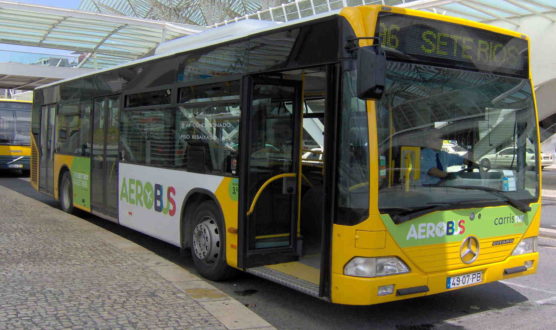
If you are in a rush and you have to be punctual, then a taxi is the fastest option. Also, Lisbon taxis has some of the cheapest fares in entire Europe. However, some taxi drivers take advantage of confused tourists. All fees should be based on the taxi-meter and not on a set fee. In addition, it’s usual if they charge you for the luggage as well. Normally it goes €1.60 for each piece. During the night, the fares increase. Nonetheless, expect to pay roughly between €10-15 to get from the airport to the historic district such as Baixa.
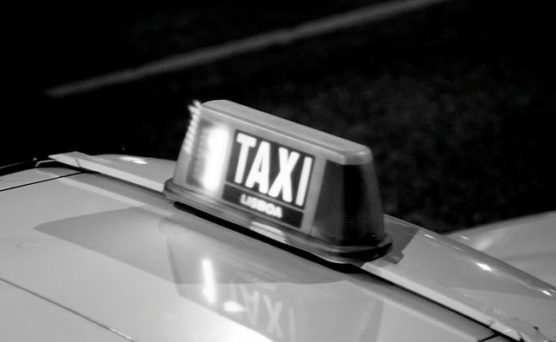
How to get around the city with the Lisbon public transport?
First of all, if you are planning to use public transport many times, we recommend getting the VivaViagem Card which can be used on Metro, Bus, Tram, Ferry, and Train. It’s a quick and hassle-free method for payment. Once you arrive in Lisbon, you can get the card from the automatic machines (there’s an English version) or the ticket offices of the metro, ferry, some train stations and even some local PayShops in Lisbon. The card costs €0.50 and it’s non-refundable. Then you can load it with travels and scan it on the card readers.
There are also different types of passes. For example, if you want to use multiple times the buses, trams, and metro for a certain day, then all-day passes are the best option. It costs €6,40 and it’s valid 24 hours from the moment of purchase.
Travelers can also opt for multiple-day tickets but for extended periods, the unlimited pass is the best choice and it’s also valid for the funicular system.
All options are valid for the surface and underground transport.
According to the law, children below the age of 4 can travel for free but have to be accompanied by an adult card or ticket-fare holder.
-
The favourite yellow tram
The tram in Lisbon isn’t just a mean of transport. Over the years, it turned into one of the city’s symbols and although it serves as a mode of transport, many people hop on the tram to experience one of the biggest attractions in the city.
Although the image of Lisbon of yellow trams, there are also modern trams that link different parts of the city. However, you can’t miss the picturesque route of the tram Nº28. This is a typical wooden tram which sound of a horn will transport you to another era. It links Martim Moniz with Campo Ourique and passes through famous districts such as Graca, Alfama, Baixa, and Estrela. While other destinations incorporate the trams into museum attractions, in the Portuguese capital, the vintage trains are part of the Lisbon public transport network. A single ticket for this experience will cost you around €3 and you can purchase it onboard.
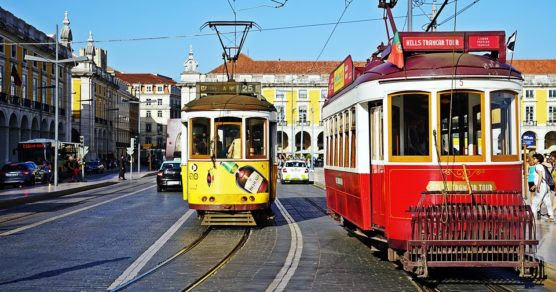
-
Metro
This is considered one of the fastest and cheapest options for the Lisbon public transport system. The stations are well signposted and you will recognize them by the large blue M. English speaking tourists will easily find their way in the metro as most of the instructions are written in English. As we mentioned before, the Viva card allows unlimited use of Lisbon transport. Otherwise, a single ticket costs €1.50. For more information, you can visit this page.
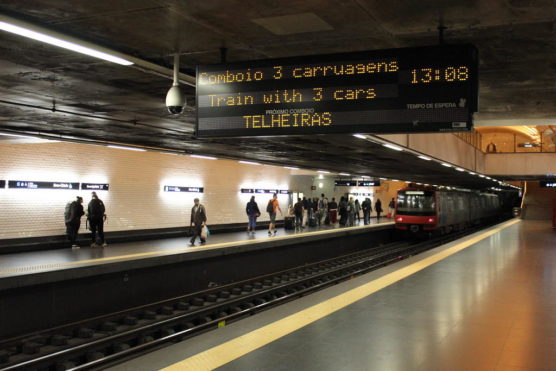
-
Buses
Buses are an efficient way to get around Lisbon. There are several lines that run through the city and if we have to compare them with the trams, well buses are a cheaper and faster way to get around. Moreover, they run from 5 am to 11 pm. You can buy tickets from the driver and a single ticket costs about €2.
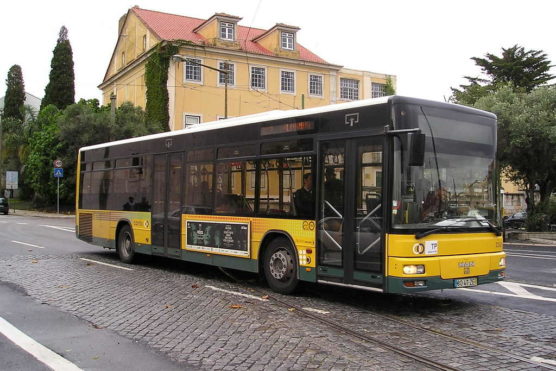
-
Funicular
There are four elevators that are reliable means of transport to discover certain parts of Lisbon. They are a good way to ‘’taste’’ from the historical charm of the city, what’s more, they’ve been declared historical sites since 2002. The name of the 4 elevators as it follows: Elevador de Santa Justa (the distance between Largo do Carmo and Rua do Ouro); Ascensor de Gloria (the route between Praca dos Restauradores and Bairro Alto); Ascensor da Bica (It’s the Rua de Sao Paulo and Largo de Calhariz); Ascensor do Lavra (the oldest of all, covering the distance between Largo da Anunciada and Travessa Forno Torel).
Don’t forget that you can use the unlimited pass for the funicular system ?.
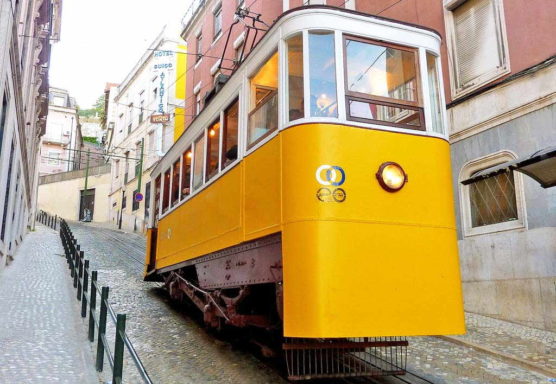
-
Ferry
If you want to discover Lisbon other than land and get a different glimpse of the city, that’s your option! Lisbon is situated on the river Tejo and prior to the construction of bridges, ferries were the only way to get from one to another part of the city. The main company is Transtejo Soflusa and the journeys start from Belem to Trafaria; from Cais do Sodre to Cacilhas, Seixal and Montijo. On the other hand, the company provides tourist cruises and interesting information in several languages. For more information, visit the Transtejo page.
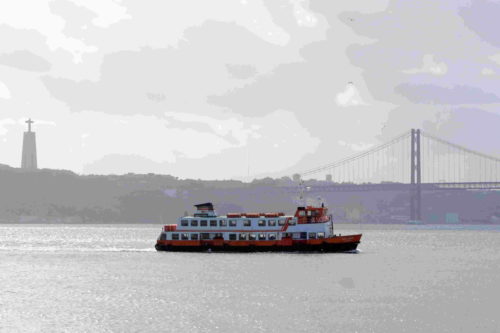
-
Bike
Biking in Lisbon is perhaps not the best idea. There are still a lot of adjustments that can be made regarding the cycling infrastructure. Furthermore, Lisbon is a big city with heavy traffic jams and not to mention the fact that it’s located on hills. All these turn Lisbon into a challenging city for cyclists where one should have good biking skills. Lisbon public transport system doesn’t benefit from bike sharing system either. If you want to rent a bike, there are several shops where you can do it. The best place to ride a bike is the Parque das Nacoes.
-
Car
The car is often a convenient mean of transport but that’s not the case for Lisbon. As a big European capital, you can find yourself stuck in traffic jams especially in the rush hours. Moreover, the scarcity of free parking slots adds to the hassle. If despite that, you want to experience Lisbon by car, there are few car rental companies around the city and the airport.
These are your options for the Lisbon public transport system. If you are heading to Lisbon and you are on a budget, then you don’t want to miss the best activities in the capital of Portugal and these incredible eateries where you can experience the delicious Portuguese cuisine!

